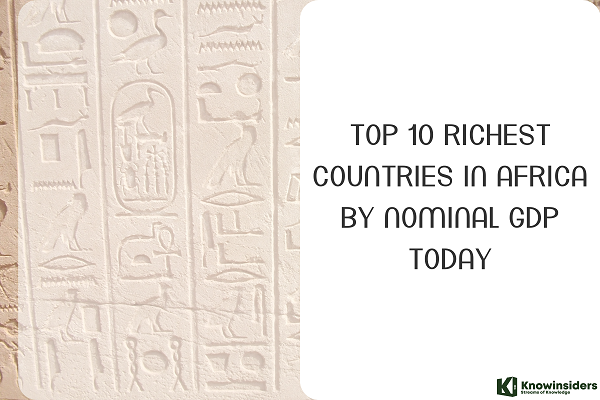Top 7 Oldest Pyramids In The World - The First Pyramids
 |
| Top Oldest Pyramids In The World. Photo: knowinsiders. |
Pyramids are closely associated with the Ancient Egyptian culture, which erected these grand monuments as tombs for their Pharoahs. Although the Egyptians are credited with building the very first pyramids, they are not the only ancient cultures who built such structures – in fact, the Mesopotamians (one of the first civilizations), built the earliest pyramidal structures called ziggurats. With the exception of the Caral Pyramids in Peru, all of the pyramids on this list below are located in Egypt.
The list of top 7 oldest pyramids - the first pyramids in the world
1. Pyramid of Djoser
2. Caral Pyramids
3. Pyramid of Meidum
4. Bent Pyramid
5. Red Pyramid
6. Great Pyramid of Giza
7. Pyramid of Khafre
What are the oldest pyramids - the first pyramids in the world?
1. Pyramid of Djoser
Everyone knows the Great Pyramid of Giza. Towering over the edge of the Western Desert, it’s perhaps the best known of the handful of monuments at Egypt’s Giza Necropolis. But about 10 miles south of the largest pyramid in the world lies another, much smaller one, decades older than any of the Giza pyramids.
The Pyramid of Djoser, also spelled Zoser, is widely believed to be the oldest pyramid in the world. It dates back to around 2630 BCE, while construction on the Great Pyramid of Giza began in 2560 BCE, roughly 70 years later. Djoser, sometimes spelled Zoser (though he was actually called Netjerykhet), was a king of Egypt’s third dynasty. The planning of the pyramid has been attributed to Imhotep, a vizier who would later be deified for his accomplishments.
It started off as a mastaba tomb — a flat-roofed structure with sloping sides — and, through a series of expansions, evolved into a 197-foot-high (60 meters) pyramid, with six layers, one built on top of the other. The pyramid was constructed using 11.6 million cubic feet (330,400 cubic meters) of stone and clay. The tunnels beneath the pyramid form a labyrinth about 3.5 miles (5.5 kilometers) long.
Without the construction of Djoser at Saqqara, the Great Pyramid of Giza may have never existed. There were, quite literally, several steps for architects to climb before they could successfully build the pointy-tipped monoliths that have earned the status of world wonder.
Like all Egyptian pyramids, the Djoser pyramid was built for a ruler. King Djoser was the second ruler of Egypt’s third dynasty and held the throne for an estimated 19 years.
But behind the king’s monument was a great architect, named Imhotep. He was the chief minister to Djoser and left behind a legacy. If the name sounds familiar, it may be because the architect become known as the Egyptian god of wisdom and medicine — now listed among few other actual, historical people who were named full deities.
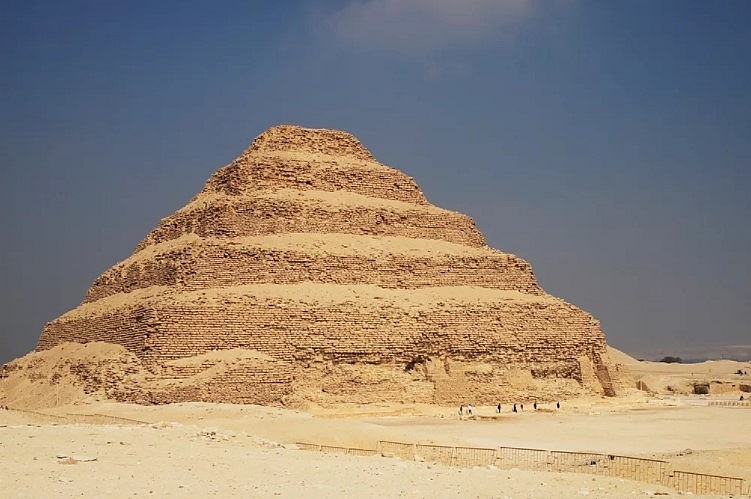 |
| The Step Pyramid of Djoser is the oldest pyramid in Egypt. It was built about 4,700 years ago. Photo: livescience. |
The pyramid is at the center of a complex 37 acres (15 hectares) in size. This complex is surrounded by a recessed limestone wall that contains 13 fake doorways as well as the real colonnade entrance on the southeast side.
A temple lies on the north side of the pyramid along with a statue of the king. The statue is surrounded by a small stone structure known as a “serdab,” his eyes peeking out through a hole. To the south of the pyramid lies a great court, with an altar and stones identified as boundary markers.
A number of facade “dummy” buildings were constructed in the complex, including a series of chapels in the southeast as well as north and south pavilions on the east side of the pyramid. These structures would have served ritual purposes and, curiously, they appear to have been partly buried by their builders, notes Egyptologist Mark Lehner in his book "The Complete Pyramids."
Year Built: c.2667 – 2648 BCE
Location: Saqqara Necropolis, Egypt (northwest of the city of Memphis)
Still Standing: Yes
| The Pyramid of Djoser is the first Egyptian pyramid and despite claims of older pyramids being found in recent years, it is the oldest confirmed pyramid in the world. The pyramid was built for Djoser (sometimes spelled Zoser), the first king of the Third Dynasty of Egypt, by Imohtep, Djoser’s vizier. Imohtep wanted to build a grand tomb for his king and decided to stack mastabas – a flat-roofed structure with sloping sides – on top of one another, creating the very first step pyramid. The pyramid is the center of a large mortuary complex that includes a recessed limestone wall, a temple, and a statue of King Djoser. |
2. Caral Pyramids
The 1,500-acre site, situated 125 miles north of Lima and 14 miles from the Pacific coast, features six ancient pyramids, sunken circular plazas and giant staircases, all sitting on a windswept desert terrace overlooking the green floodplains of the winding Supe River. Its largest pyramid, also known as Pirámide Mayor, stands nearly 100 feet tall, with a base that covers an area spanning roughly four football fields. Radiocarbon dating on organic matter throughout the site has revealed it to be roughly between 4,000 to 5,000 years old.
Caral sits in the Supe Valley, a region of Peru’s high desert nestled between the rainforest, mountains and the Pacific coast. The valley is brimming with ancient monumental architecture. And in the decades since Caral first made headlines, archaeologists working in the region have turned up about 18 nearby cities, some of which may be even older.
That remarkable discovery places Caral as one of the oldest known cities in the Western Hemisphere. Coastal Peru has long been considered one of the six recognized cradles of world civilization, and new archaeological discoveries continue to push back the dates of when the region’s “mother culture” was established. Caral was the first extensively excavated site among some two dozen in a zone along Peru’s central coast known as the Norte Chico area. Archaeologists believe the sites collectively represent the oldest center of civilization in the Americas, one which lasted from roughly 3000 to 1800 B.C., completely uninfluenced by outside forces. It flourished nearly 4,000 years before the start of the powerful Incan Empire.
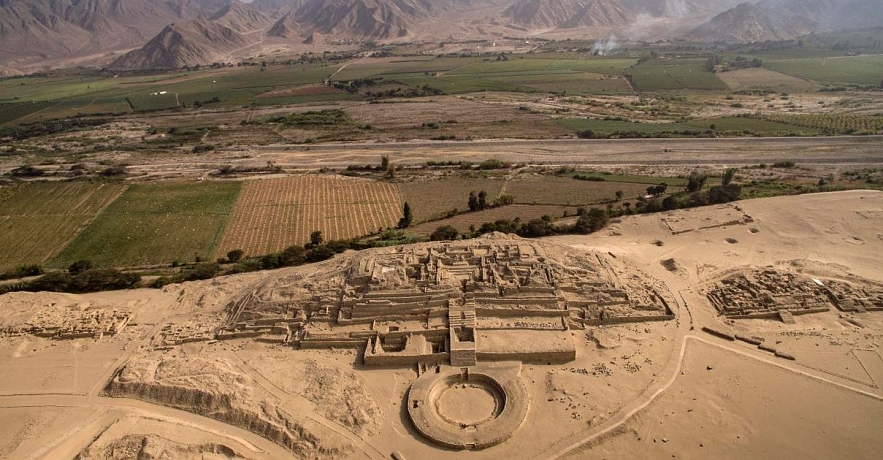 |
| Photo: andeanorigins |
Caral was first discovered in 1948, but initially received little attention – it was not until the 1970s that archaeologists realized that the “natural hills” in the area were actually stepped pyramids. Since then, the site has been extensively excavated and studied and it was declared a UNESCO World Heritage Site in 2009.The pyramid city of Caral is contemporary with the first pyramid of Egypt and the Norte Chico civilization that inhabited the city is the first known civilization in the Americas. Caral was the capital city of the Norte Chico civilization and it was a metropolis with complex agricultural practices, temples, an amphitheater, sunken circular plazas, residential areas, and six large pyramidal structures.
| Despite Caral’s significance, decades passed between when the first scholars stumbled upon the area, and when they recognized its importance. German archaeologist Max Uhle explored the Supe Valley, but not Caral itself, as part of a wide-ranging study of ancient Peruvian cities in the early 1900s. But it was American historian Paul Kosok, who is largely recognized as the first scholar to recognize and visit what is now known as the site of Caral in 1948. In his 1965 book, Life, Land and Water in Ancient Peru, he referred to the site as Chupa Cigarro Grande, after a nearby hacienda. |
Year Built: c.2627 BCE
Location: Caral, Supe Valley, Peru
Still Standing: Partially
To archaeologists, unlocking the story of Caral — and what became of the people who lived there — could carry implications for the story of the Americas as a whole. The Caral civilization survived for nearly a millennium, until, some researchers suspect, climate change wiped it out. But the people and their ideas didn’t disappear. Scientists see Caral’s influence in cultures that lived long after they were gone. All along the Peruvian coast, there are signs of mounds, circular structures and urban plans similar to those at Caral.
3. Pyramid of Meidum
It is located at medium, 80 km to the South of Memphis, on the Westbank of the Nile, to the East of Lake Moris and the Fayum oasis. It has often been assumed that the original builder of this Step Pyramid was Huni, the last king of the 3rd Dynasty. This is, however, merely based on the desire to credit at least one major building to this otherwise elusive king. Huni's name has not been found in or near the Medium Pyramid, making it quite unlikely that this monument was built for him. The fact that the pyramid was named Snofru Endures has led others to suggest that it was Snofru who built this monument.
Following the tradition that was started by the funerary monument of the Horus Netjerikhet at Saqqara, this pyramid was started as a Step Pyramid. With the pyramid of Sekhemkhet at Saqqara and the pyramid at Zawyet el-Aryan, credited to Khaba being left unfinished, the one at Meidum was the second large-scale Step Pyramid to have been completed.
Recent archaeological research has led to the assumption that Snofru built this pyramid before his 15th year and then abandoned the site to start a new royal cemetery at Dashur, some 40 kilometers to the North. What is certain is that Snofru at one point during his reign -and some suggest a high date such as the 28th or 29th year of his reign- ordered the transformation of the original Step Pyramid into a true pyramid. It is unlikely that Snofru usurped this pyramid since he already had built two other pyramids at Dashur. The reason why this king would have wanted 3 pyramids, making him the most productive pyramid builder in the history of Egypt, is not known. It is also not known whether the conversion of the original Step Pyramid into a true Pyramid was completed.
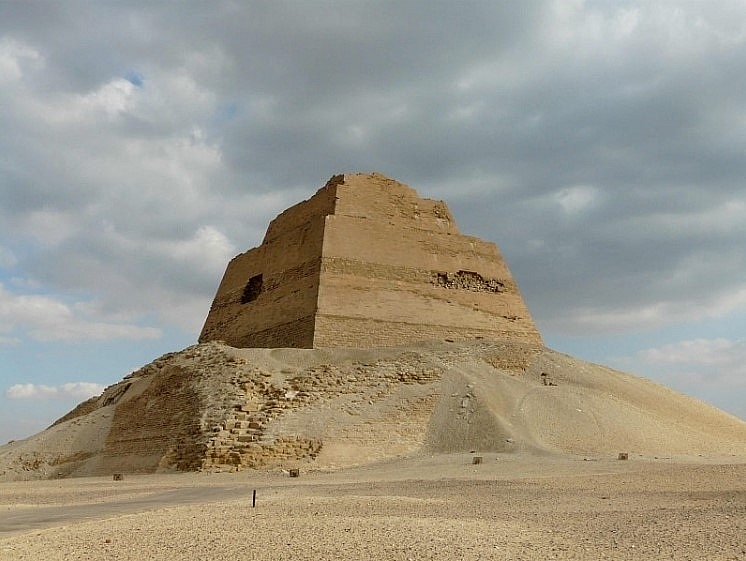 |
| Photo: Wikimedia Commons. |
Today there is little to suggest that this monument once indeed was a pyramid. All that remains now is a three-stepped tower rising up from a hill of debris. The internal structure of the pyramid is fairly simple, compared to its successors, but at the same time, it was an innovation that would become the standard for generations to come.
Year Built: c.2600 BCE
Location: Meidum, Egypt (south of modern-day Cairo)
Still Standing: Partially
| The pyramid of Meidum, which is now known as the “collapsed pyramid” or “el-haram el-kaddab” (the “False Pyramid” in Arabic), is believed to be the second Egyptian pyramid built sometime after Djoser’s. The pyramid has earned all of these nicknames over the years because not much of its structure remains – by the 15th century, only five steps had survived and today it no longer resembles a pyramid at all. Although archaeologists are not sure, they think that the pyramid’s construction may have been started by Huni, but completed by Sneferu. The pyramid’s instability is most likely due to all of the modifications made to it while it was being built. |
The entrance is located on the north face of the pyramid, above ground level. A descending passage goes down to below ground level and ends in a horizontal passage. Two small chambers or niches open to the left and right of this passage. At the end of this passage, a vertical shaft leads up to the burial chamber which is located at ground level. This is the first pyramid to have a room inside its actual core. The burial chamber measures 5.9 by 2.65 meters, which is quite small, yet another sign that the builders were experimenting. There is no sarcophagus and no trace of a burial.
Outside the pyramid, many elements that would become the standard for pyramid complexes to come were already present as well. A chapel, measuring 9.18 by 9 meters, was built against its eastern face. To the south, there was a small satellite pyramid. It has an entrance in its north face with a descending passage leading down to the burial chamber. It was already heavily destroyed when it was found.
Traces of an enclosure wall, measuring some 236 by 218 meters surrounding this complex have also been found, as well as a causeway, cut in the bedrock and encased in limestone.
4. Bent Pyramid
The Bent Pyramid at Dahshur was built during the end of 27th century BC by Sneferu, the father of Khufu, who built the Great Pyramid at Giza. It is an important stepping stone in the development of pyramid construction. Sneferu built more than one pyramid at Dashur, but the Bent Pyramid was the first.
This was the second attempt by Sneferu to build a smooth-sided true pyramid. It is believed that the first attempt, at Meidum in Fayoum, collapsed during construction. This second attempt was also plagued by engineering issues, although it was eventually completed. Sneferu’s builders were still learning and planned to built the huge structure with a steep inclination 54 degrees on each side. This proved unstable and caused them to abruptly change the plan in the middle of construction. The Bent Pyramid gets its name from the fact that the angle of its sides shifts suddenly about one-third of the way up from 54 degrees to the more gentle slope of 43 degrees. For this reason, the Bent Pyramid is considered a transitional pyramid, rather than a true pyramid.
Despite this engineering mistake, the Bent Pyramid remains an impressive site. It is 332 feet tall and it is unique among all of the pyramids in Egypt in that much of its limestone casing remains intact so that visitors can get an impression of what all of the pyramids were intended to look like before these outer stones fell off or were taken for other construction projects.
The Bent Pyramid has not been accessible to the public since 1965, as Live Science’s Laura Geggel reports. During the intervening decades, the 331-foot-tall structure underwent much-needed restoration work; experts fixed up internal and external stairs, added a lighting network and repaired stone work in the corridors and chambers. Thanks to their efforts, tourists can now enter a raised entrance on the newly reopened pyramid’s northern side, climb down an 86-yard tunnel and explore two chambers, according to Reuters’ Aidan Lewis.
Year Built: c.2600 BCE
Location: Dashur Necropolis, Egypt (south of modern-day Cairo)
Still Standing: Yes
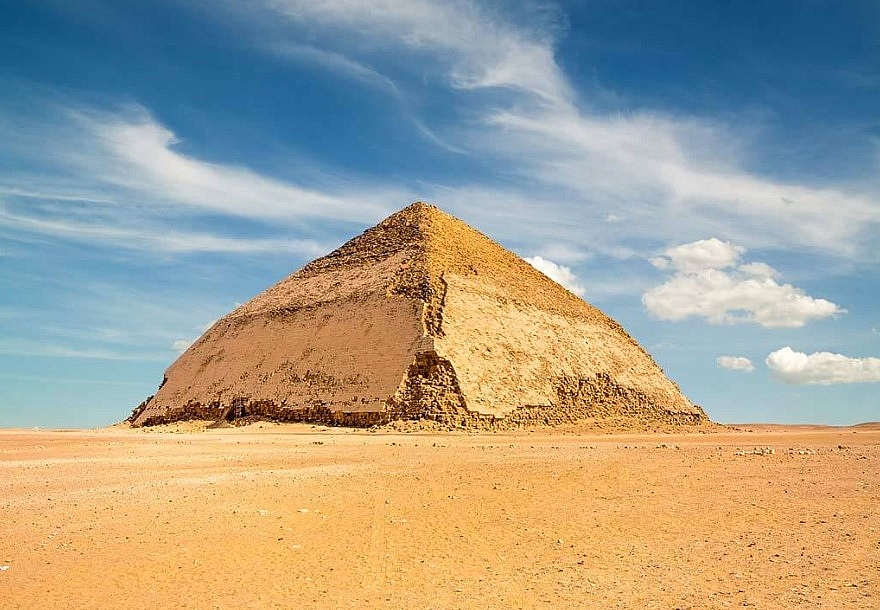 |
| Bent Pyramid, Egypt / Shutterstock.com |
| The Bent Pyramid was an experiment of sorts for Sneferu, a pharaoh of the Old Kingdom of Egypt. It was his second pyramid after the one in Meidum. The pyramid’s name comes from its top section, which appears bent because of its shallow angle. It’s possible that the original angle was too steep, forcing the builders to compensate to prevent the pyramid from collapsing. Closed to tourism since 1965, the Bent Pyramid re-opened to visitors in 2019. Tourists can access the side pyramid. It opened to the public for the first time since its 1956 excavation. Some archaeologists believe that this side pyramid was intended for Sneferu’s wife, Hetepheres. |
Its appearance is unusual. The first 49 metres, which have largely kept their smooth limestone casing, are built at a steep 54 degree angle, before tapering off towards the top. It has been reopened to the public for the first time since 1965, when it was closed for restoration works.
The angular shape contrasts with the straight sides of Sneferu’s Red Pyramid just to the north, the first of ancient Egypt’s fully formed pyramids and the next step towards the Great Pyramid of Giza.
5. Red Pyramid
After the Great Pyramid of Khufu at Giza, the Red Pyramid at Dashur has the largest base (only slightly smaller than Khufu's pyramid, each side measures 722 feet) of any pyramid in Egypt. However, with it's sides sloping at 43 degrees 22', it is substantially shorter at 343 feet (104 meters). It is the fourth highest pyramid ever built in Egypt, with almost 160 layers of stone. Significantly, the Red Pyramid was the first successful, true, cased Pyramid built in Egypt, ushering in the era of the Giza style pyramids.
The Red Pyramid was another project of the 4th Dynasty pharaoh Sneferu. After the completion of the Bent Pyramid, which also stand nearby in the Necropolis at Dahshur, Sneferu set out to correct the mistakes that were made in the construction of his that pyramid and the one at Meidum that collapsed during construction.
The Red Pyramid, finished sometime at the beginning of the 26th century BC, was to be first successful attempt to construct a true pyramid, making it the most direct inspiration for the later 4th Dynasty pyramids at Giza.
The squat appearance of this pyramid in comparison to other pyramids of comparable size is due to the fact that its sides are included at the relatively shallow angle of 43 degrees. After the engineering mistake that led to the ‘bend’ in the Bent Pyramid, Sneferu’s builders presumably decided to build this pyramid using the same angle of inclination that had allowed for the completion of the Bent Pyramid. The Red Pyramid 341 feet tall.
Located at a short distance from Saqqara, the Red Pyramid at Dahshur was built for the pharaoh Snefru, father of Khufu for whom the Great Pyramid of Giza was built. The Red Pyramid is the first 'true' pyramid and it has the second largest base of all Egyptian pyramids. What makes it yet more interesting is that it can be fully accessed, including the chance to see the burial chamber. There's something special about exploring the cold and silent passageways inside the pyramid. Do not go inside if you are not comfortable in enclosed space.
Perhaps greater importance is the fact that some of the casing was dated. This not only gives us clues to how long the pyramid took to build, but also the sequence of work that took place. From these, we know that the pyramid was probably begun between the twenty-second and twenty ninth year of Snefru's reign. Other dates tell us that two years later, six layers of stone had been laid. However, within four years, 30 percent of the pyramid had been completed, and the entire pyramid was finished in about seventeen years.
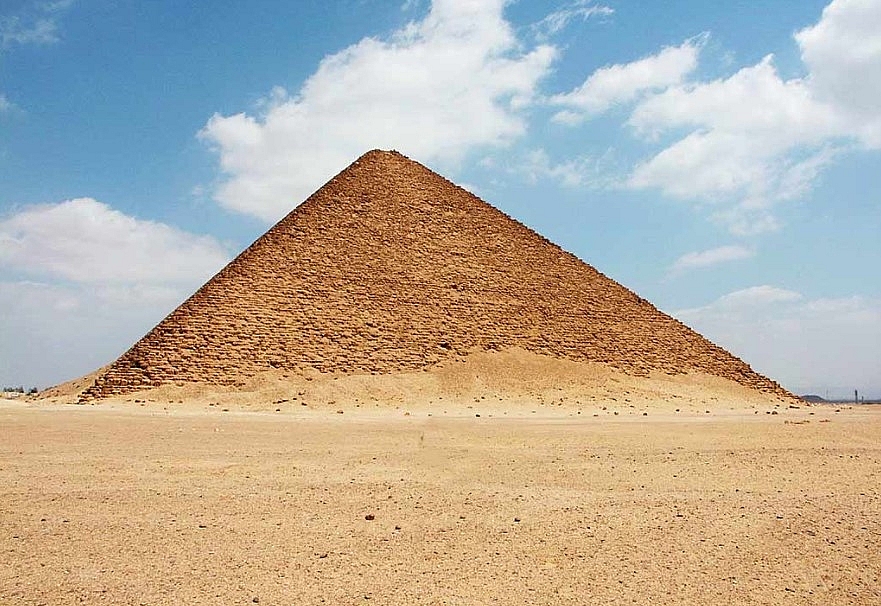 |
| Red Pyramid Of Dahshur, Egypt – by lienyuan lee / Wikimedia Commons |
| The Red Pyramid is the highest in Dahshur, and its name of “Red” is due to the reddish rusty colour of its stones. It didn’t use to be this colour, but a beautiful pure white of limestone of Tura, south of modern Cairo. All pyramids had a casing made of this white limestone, which was reused in medieval times. It is the third-largest Egyptian pyramid after those of Khufu and Khafra at Giza. The Red Pyramid was one of three pyramids built by King Sneferu after the Bent Pyramid, located one kilometre to the south, and the so-called Meidum pyramid. This pyramid may have been started in the 13th year of his reign, taking 10 years to be built. |
Year Built: c.2600 BCE
Location: Dashur Necropolis, Egypt (south of modern-day Cairo)
Still Standing: Yes
The visitor can enter the pyramid from an entrance on the northern side, leading to a passageway (a meter in height and a meter in width). It then slopes down to another gallery into a chamber with a corbelled roof, similar to an inverted stairway. Another passage leads to a second chamber located in the middle of the pyramid, directly at the western end of that chamber. To the south of it, a passageway leads to a third chamber, which is believed to have been the pyramid’s burial chamber.
6. Great Pyramid of Giza
The Great Pyramid Of Giza is the oldest and largest between the 3 pyramids of Giza. It is also the oldest and the only still standing structure of the Seven Wonders of the Ancient World. The Great Pyramid was built around 2560 – 2540 BC, with a height of 146.5 metres (481 ft). The Pyramids of Giza are listed as cultural world heritage site.
The largest pyramid in Giza, and in the world, belongs to the second king of the Fourth Dynasty, Khufu or “Cheop”. Khufu’s pyramid is Giza’s oldest and, at its great size of 145 metres, became known as “The Great Pyramid”. In fact, Khufu’s pyramid was once the tallest structure in the world as well as being one of the Seven Wonders of the World. A UNESCO World Heritage site, Giza is also where one finds the Great Sphinx. Estimated to date back to 2528–2520 BC, some Egyptologists believe that this majestic half man, half lion is modelled on Khafra.
For centuries it has been one of the world’s greatest enigmas: how did a primitive society with little technology build the Great Pyramid of Giza — the oldest and only survivor of the Seven Wonders of the Ancient World? At 146 metres high, it was for nearly 4,000 years, the tallest man-made structure of Earth. Every summer, when the Nile flooded, giant dykes were opened to divert water from the river and channel it to the pyramid through a manmade canal system creating an inland port which allowed boats to dock very close to the work site — just a few hundred metres away from the growing pyramid.
The limestone was carried along the River Nile in wooden boats built with planks and rope that were capable of hauling two-and-a-half tonne stones. Using ancient tomb carvings and the remains of an ancient dismantled ship as a guide, archeologist Mohamed Abd El-Maguid has recreated one Egyptian boat from scratch.
3D scans of the ship planks revealed that the boats were full of holes that lined up perfectly with each other. Instead of nails or wood pegs, these boats were sewn together with rope like a giant jigsaw puzzle.
Archeologist Mark Lehner has uncovered artifacts that provide evidence of a vast settlement that held as many as 20,000 people. Average workers lived in huge dormitories, but team leaders like Merer lived in relative luxury with homes of their own. Thousands of tiny bits of detritus of everyday life reveal that these hungry workers were well taken care of. An entire city was formed near the pyramid site to provide food and drink. For most of the workers, building the pyramids was a source of prestige; these people were valued servants of the state.
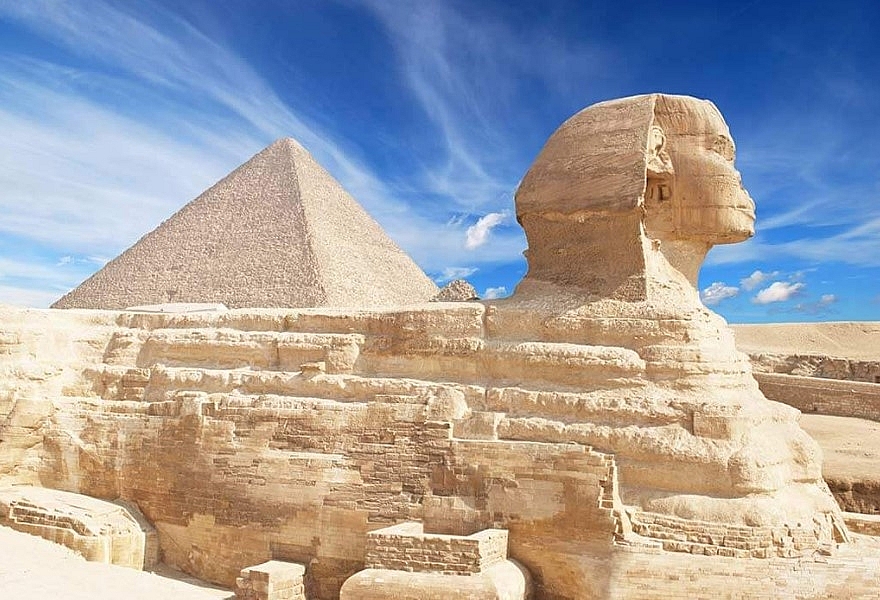 |
| The Sphinx & The Great Pyramid of Giza, Egypt / Shutterstock.com. |
Year Built: c.2580 – 2560 BCE
Location: Giza, Egypt
Still Standing: Yes
| It originally had a smooth, white limestone covering that reflected sunlight or moonlight. Inside, the King’s Chamber holds a large granite sarcophagus. The Giza complex also includes mortuary temples, pyramids for Khufu’s wives, and mastaba tombs for the nobility. To further learn about Giza’s wonders, check out this private half-day tour. The Great Pyramid of Giza was the tallest building in the world for 3,800 years! The Lincoln Cathedral in Lincoln, England, which was completed in 1311, was the first building to surpass the height of the Great Pyramid. |
7. Pyramid of Khafre
Khafre, the second pyramid, seems larger than that of Khafre's father, Khufu. At just 136m high, it’s not, but it stands on higher ground and its peak is still capped with the original polished limestone casing. Originally all three pyramids were totally encased in this smooth white stone, which would have made them gleam in the sun. Over the centuries, this casing has been stripped for use in palaces and mosques, exposing the softer inner-core stones to the elements. The interior is much simpler than that of Khufu’s pyramid, with a single burial chamber, one small subsidiary chamber, and two passageways. The mortuary temple at the pyramid base was more complex than that of Khufu and was filled with statuary of the king—over 52 life-size or larger images originally filled the structure.
The chambers and passageways of this pyramid are less elaborate than those in the Great Pyramid, but almost as claustrophobic. The entrance descends into a passage and then across to the burial chamber, which still contains Khafre’s large granite sarcophagus. At the time of research the interior of this pyramid was closed; it usually alternates opening with the Pyramid of Menkaure.
Back outside, to the east of the pyramid, are the substantial remains of Khafre’s funerary temple and the flagged paving of the causeway that provided access from the Nile to the tomb.
The mortuary temple of Khafre at the foot of his pyramid and the valley temple at the end of the causeway are larger than any of those of older pyramids, and also among the best preserved of the Old Kingdom. Another development in the reign of Khafre is the complexity of their layout, with the elements constituting his mortuary temple becoming the new standard that its later Old Kingdom counterparts would follow.
A unique feature of Khafre’s complex is the inclusion of a colossal statue beside his valley temple—the Great Sphinx. The valley temple is made of massive limestone blocks encased in granite, floors made of alabaster, and its wide hall features monolithic granite pillars. The symmetrically arranged niches along the walls of the hall once accommodated statues of the king, some of which are currently on display in the Egyptian Museum. One of these, the famous granodiorite statue of Khafre with Horus as a falcon perched behind his head, is widely considered one of the masterpieces of ancient Egyptian art.
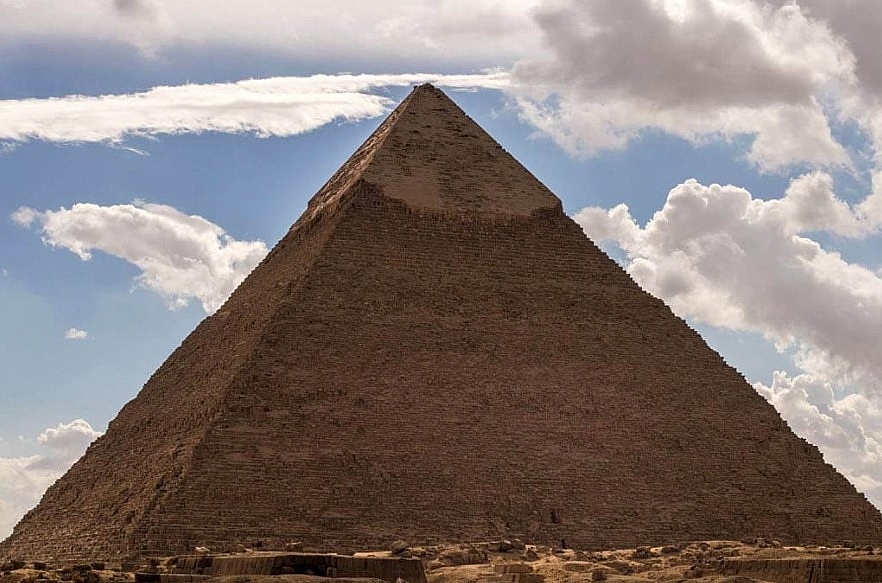 |
| Pyramid Of Khafre, Egypt / pxhere.com |
Year Built: c.2520 BCE
Location: Giza, Egypt
Still Standing: Yes
The high temple is not attached to the pyramid, there is a gap between the two. The lower temple is in a very good state of conservation for such an ancient building. It should be noted that this complex has only one pyramid whose usefulness has not yet been found. It seems that she only had a cult role, but it is also possible that the tomb of one of the queens of Khafra.
| Khafre (c.2558–2532 BC), whom the ancient Greeks knew as Khefren, was a son of King Khufu (Cheops), the builder of the Great Pyramid. He built the second pyramid complex at Giza, and constructed his tomb on slightly higher ground, making it appear just as tall as his father’s. At 143.5 meters in height, however, his pyramid is only slightly shorter, and a tremendously impressive monument. Its core masonry is made of blocks of local limestone. The top of the pyramid still preserves the beautifully polished blocks of high-quality limestone that once encased the majority of the structure’s towering height. This white stone was quarried in Tura, south of Maadi, and transported here by ship. |
 Top 7 Most Handsome & Hottest Hockey Players in America Today Top 7 Most Handsome & Hottest Hockey Players in America Today Who are the hottest hockey players in America? Curious? Check out the list of the 7 most handsome and hottest AmericanHenrik Lundqvist Hockey players right ... |
 Top 7 Most Hottest Italian Footballers That Still Play Top 7 Most Hottest Italian Footballers That Still Play Beauty and charm are some of the basic things that make a person attractive. Who are the most handsome and hottest Italian football players? |
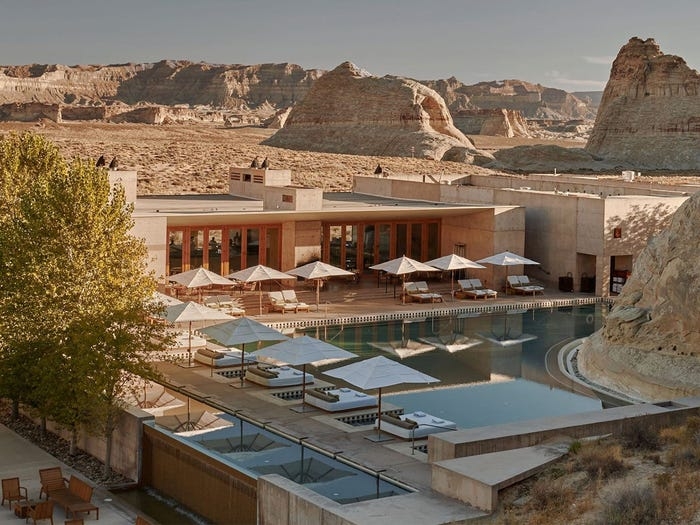 Top 7 Most Luxurious Hotels In The US Top 7 Most Luxurious Hotels In The US Looking for luxurious hotels in the US with high quality? Check out this list! |



